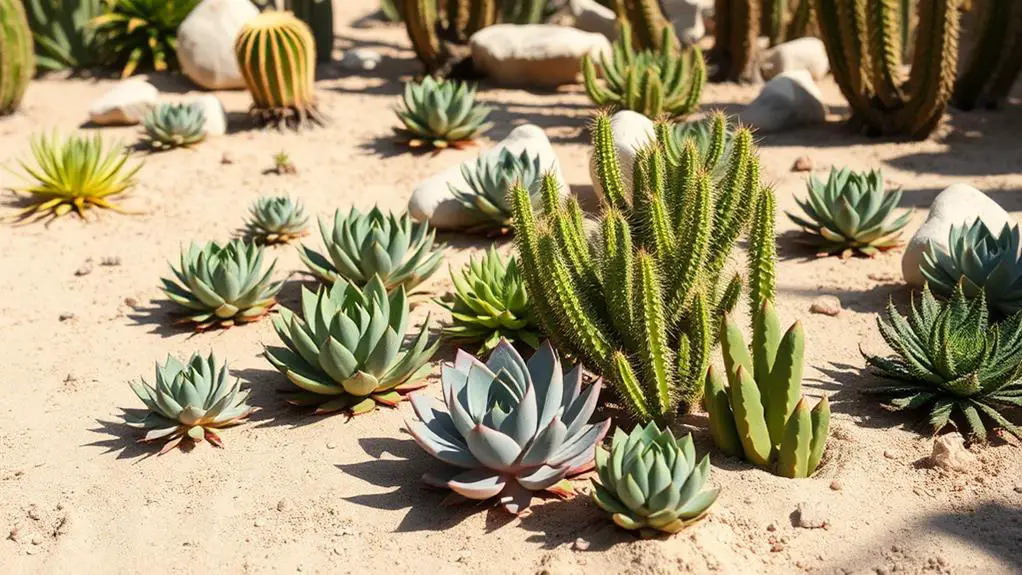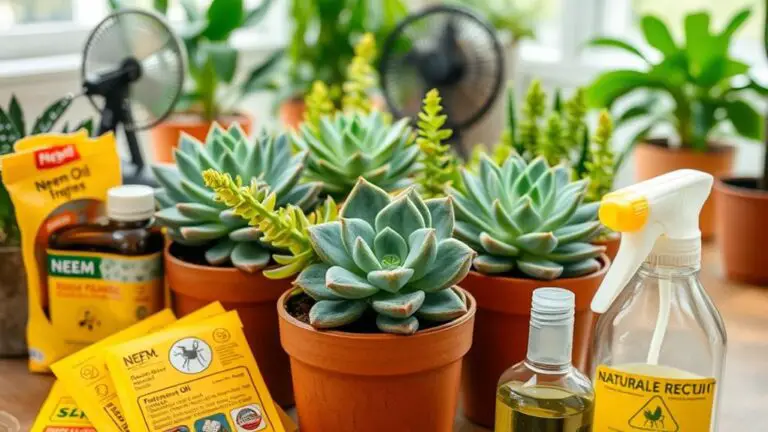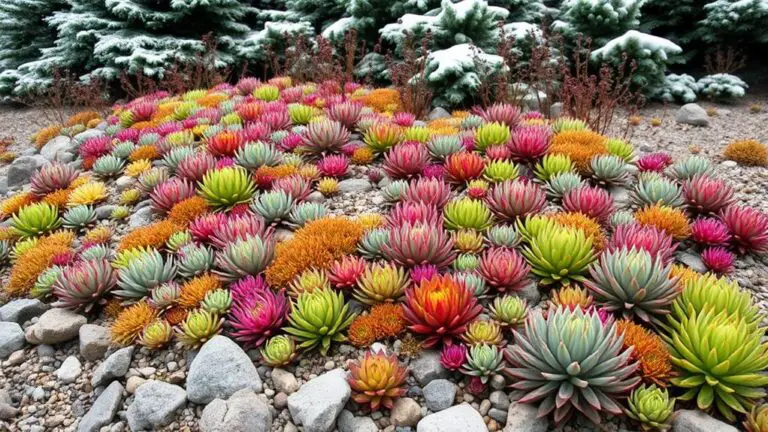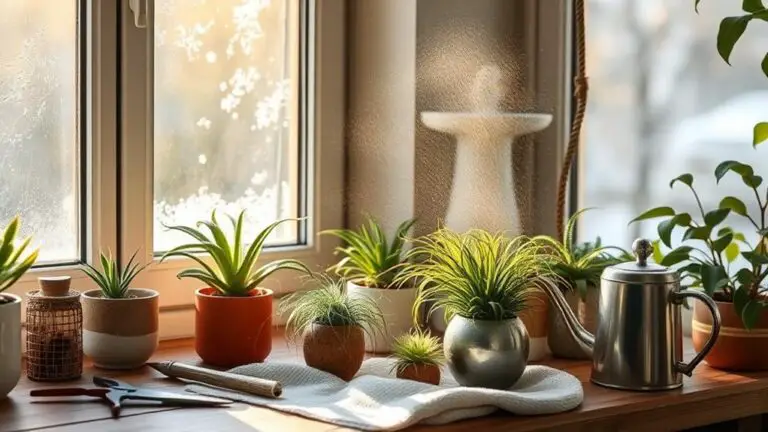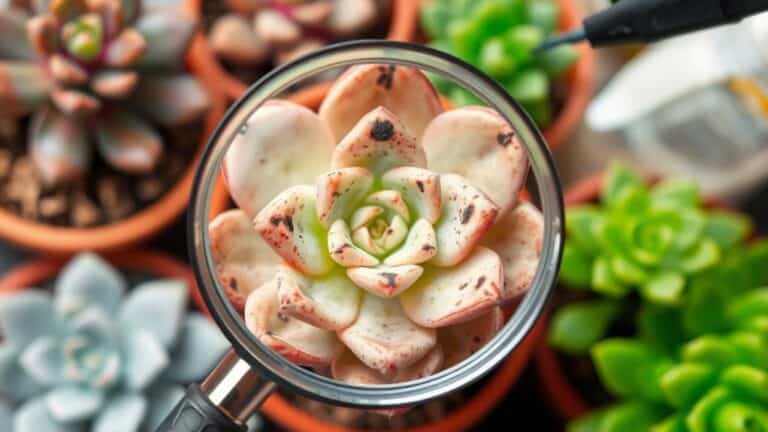How to Grow Succulents Well in Sand
When you're looking to grow succulents well in sand, the first thing you need to take into account is how to create the perfect soil mix. It's not just about dumping sand into a pot; succulents require a balanced blend that guarantees proper drainage and pH levels. You'll want to mix equal parts potting soil and coarse sand, and perhaps add some perlite or pumice for extra drainage. But that's just the beginning. How do you water these plants to avoid root rot, and which succulents thrive best in sandy environments? Let's explore.
Understanding Succulent Needs
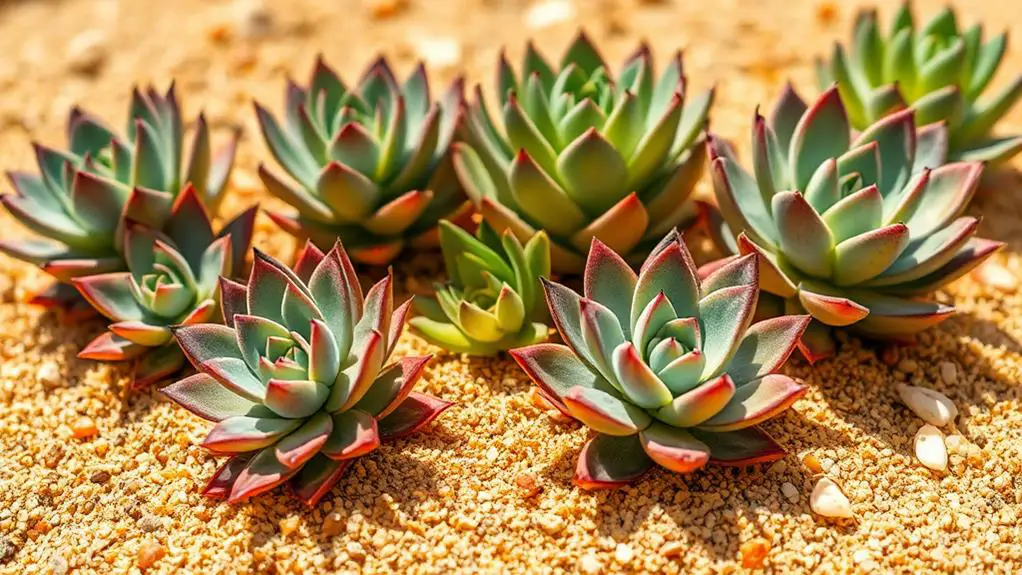
To successfully grow succulents in sand, you first need to understand their specific needs. Succulents thrive in well-draining soil, so a sandy mixture is perfect. However, you'll need to add some organic matter to guarantee they get the nutrients they need and to balance the pH level. Aim for a pH between 6.0 and 7.0 to create a healthy environment.
In sandy environments, it's vital to allow the water to drain properly. Overwatering can lead to root rot, so always monitor soil moisture. Only water your succulents when the soil is completely dry. Their fleshy leaves and stems store water, making them well-suited for low-humidity conditions.
Providing bright, indirect sunlight is essential for your succulents' growth. Too much direct sunlight can burn them, while too little can stunt their growth. Keep an eye on their light exposure to guarantee they get just the right amount.
Choosing the Right Sand
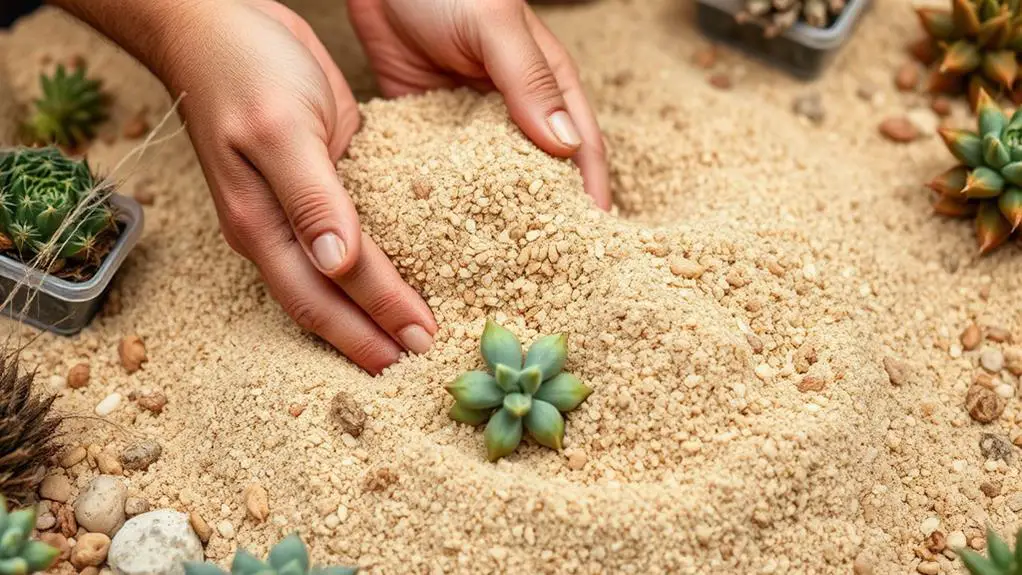
When it comes to growing succulents in sand, choosing the right type is essential. You'll want to focus on coarse sand, as it provides excellent drainage, preventing root rot and ensuring healthy root systems.
Avoid fine sand, as it retains too much moisture and can compact over time, which isn't good for your succulents.
Opt for construction sand or horticultural-grade sand. These types are clean and free of contaminants, creating ideal conditions for your plants.
Mixing sand with potting soil or perlite can create a balanced medium, helping with both drainage and nutrient availability. This mix is especially important if you're planting outdoors or in containers.
Keep an eye on the moisture levels in your sandy soil. Sand dries out quickly, so your succulents might need more frequent watering compared to those in heavier soils.
However, this quick-drying nature helps prevent overwatering, a common problem that can harm succulents.
Creating a Balanced Soil Mix
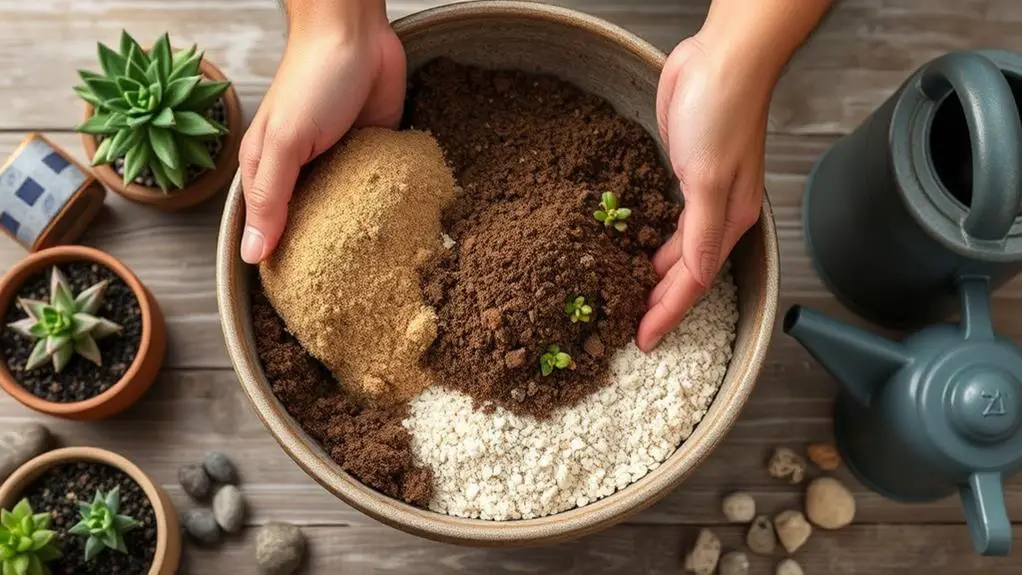
Creating a balanced soil mix is vital for the health of your succulents. To start, combine equal parts potting soil and coarse sand. This mix guarantees good drainage and aeration, which are essential for succulent roots.
You can also add perlite or pumice to the soil mix. These materials help enhance drainage and prevent soil compaction, letting your succulents thrive.
Maintaining the right soil pH is also important. Aim for a pH level between 6.0 and 7.0. In this range, succulents can absorb nutrients more effectively.
To make your soil even better, include organic components like coconut coir or compost. These additions provide vital nutrients and support the drainage properties you're looking for in a sandy soil mix.
It's important to monitor moisture levels regularly. Sandy soils tend to dry out quickly, so you'll need to check more often to avoid underwatering.
Watering and Drainage Tips

After you've perfected the soil mix, it's time to focus on watering and drainage to keep your succulents healthy. Succulents thrive in well-draining soil, so make certain your sand is coarse. Fine sand holds excess water, leading to root rot.
Water your succulents sparingly. Allow the top two knuckles of soil to dry out completely before you water again. This helps prevent overwatering. Use a container with drainage holes. These holes let excess water escape and guarantee healthy oxygen circulation around the roots.
To further enhance drainage, add a layer of pebbles or gravel at the bottom of the pot. This prevents water from accumulating in the sandy medium.
Always check for watering cues. Shrinking or dull leaves can indicate your succulent needs moisture. But don't just rely on this; always test the soil first to verify it's dry.
Best Succulents for Sand

Choosing the right succulents for sandy soil can make all the difference in your gardening success. Some succulent plants thrive in sandy environments because they can store water and grow well in such conditions.
Let's explore some of the best options.
Corpuscularia lehmannii (Ice Plant) is a hardy plant with blue-green leaves that thrives in sandy soil. It's perfect for decorative arrangements and can handle dry conditions well.
Euphorbia milii (Crown of Thorns) features thick, fleshy leaves and adapts well to sandy soil. This resilient succulent can tolerate periods of drought, making it a great choice if you want to avoid overwatering.
Agave americana (Century Plant) is a striking succulent with large leaves that can flourish in various soil types, including sandy mixtures. Its visual appeal adds interest to any garden.
Aloe ferox (Bitter Aloe) grows well in sandy soil and has medicinal properties. However, be cautious as it's toxic to pets.
Senecio serpens (Blue Chalksticks) is native to rocky, sandy habitats and features trailing blue-green stems. This succulent is well-suited for sandy soil conditions.
These succulents that grow in sandy soil will help you create a beautiful, low-maintenance garden with excellent drainage, reflecting their natural environment.
Frequently Asked Questions
Can Succulents Grow in Just Sand?
You can grow succulents in just sand, but they won't thrive long-term. Sand lacks essential nutrients needed for their sustained health. Use a well-draining soil mix with organic matter to guarantee your succulents grow strong and healthy.
How Often Do You Water Succulents in Sand?
Water succulents in sand sparingly, every 2-4 weeks. Let the soil dry out completely between sessions to avoid root rot. Insert your finger two knuckles deep; if it feels dry, it's time to water.
How to Propagate Succulents in Sand?
To propagate succulents in sand, let cuttings callus for a few days. Plant them in a mix of coarse sand and potting soil. Water sparingly, keep them in bright indirect light, and monitor for growth.
Can I Mix Sand and Potting Soil for Succulents?
Yes, you can mix sand and potting soil for succulents. Combine equal parts potting soil and coarse sand to create a well-draining mix. This helps prevent root rot and mimics their natural habitat, promoting healthy growth.
Conclusion
You've got this! Growing succulents in sand isn't as tricky as it sounds. Just remember to use a balanced soil mix with coarse sand, perlite, or pumice for good drainage. Water sparingly, making sure the top two inches of soil dry out before the next watering. Choose pots with drainage holes and place your plants in bright, indirect sunlight. With these tips, you'll have healthy, thriving succulents in no time. Happy gardening!

